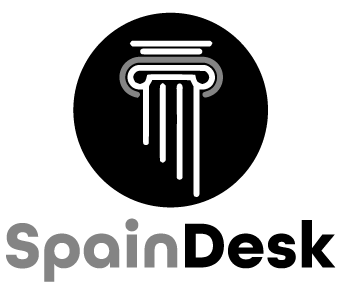Invoices in Spain: Types, Formats, Regulations, and More
Invoices in Spain are an important part for Spanish tax authorities to keep control of companies’ taxes payments. They document the income and expenses of a business and play a key role in tax filings. Invoices are also a valuable source of information for businesses. They can help track spending patterns, identify areas where costs can be reduced, and assess the profitability of individual products or services.
Invoices are an essential part of doing business and should be handled with care to ensure that all required information is included. In this article, you will find information about invoice processing in Spain.
Content
What is an invoice?
An invoice is a seller’s record of goods or services sold, the money owed for them, and any additional fees or taxes that must be paid. The Spanish word for the invoice is “factura”.
What should be on the Spanish invoice
If you operate a business in Spain, you must include certain basic information on your invoice, such as:
- Company name
- Contact information (address buyer and seller)
- Tax identification number
- Unique invoice number
- Invoice date
- Date the payment is due and any other payment terms
- Acceptable forms of payment
- Description purchased goods and services provided, including price and quantity
- VAT Amount
- Total amount
You must show the VAT identification number of your customers if you export goods or services to an EU Member State.
The Simplified invoice
Invoices may be simplified in certain cases (also known as tickets, credit notes, and receipts). Simplified invoices can be created when you are not invoicing a business or entrepreneur, and in the following situations:
When can you use simplified invoices?
Simplified invoices are only used when you aren’t conducting business deals with firms or entrepreneurs. You can only use them with private individuals, and in the following situations:
Amount less than 400 euros: When the amount of the invoice is less than 400 euros, the invoice can be issued in a format that is considered a receipt.
Corrective invoice: Corrective invoices are created when you need to make changes to an invoice previously sent. This type of invoice must be used when the scope or quantity of goods or services is changed, or if prices are modified, additions are made, discounts are applied, taxes change, etc. These invoices must include information about the original invoice and corrections to it.
Companies with the following specific activities: The sum of the invoice does not exceed 3000 Euro (VAT included) and are one of in the following categories:
- Retail sales and services
- Sale or services of an ambulance
- Sale or services at the home of the consumer
- Services of transportation of people or luggage
- Clubs, hotels, and restaurant services
- Telephone services like telephone booths or card use
- Hairdressers, beauty schools, dry cleaners, and laundries
- Toll roads, sports facilities, and parking
- Services related to photographs film rental and development of photographs.
What should be in a simplified Spanish invoice
The simplified invoice should contain the same information as a normal invoice. The difference is that it doesn’t need to be registered with the Spanish revenue authorities.
- Invoice number/ series
- Date of issue
- Invoice date
- Your tax identification number
- Description of the goods dispatched or service provided
- VAT amount
- Total amount
Your tax identification number
The tax identification number in Spain is a key element for the tax authorities to monitor business tax payments. It is an important requirement. When you create a business in Spain you are required by Spanish legislation to be VAT Registered.
This tax number is called the Número de Identificação Fiscal or NIF in Spanish. This number aids in the tracking of businesses’ purchases and expenses for tax purposes both domestically and internationally.
Spanish VAT legislation
Under Spanish VAT legislation, taxable persons are allowed to deduct their input VAT from their output VAT. They are also allowed to retain any input VAT paid on purchases of goods or services that relate directly to their taxable output.
VAT refunds and tax declarations
Next to this, you can request vat refunds if you are not required to pay VAT in Spain. For example, VAT refunds can be done when you are not registered as a taxable person in Spain. To deduct VAT or VAT refunds, you require to have the invoices you have produced or received.
Electronic invoices to government bodies
If you work for the Spanish government, you must submit an e-invoice. An electronic invoice is the same as a paper invoice, only it is transferred to the client in electronic format.
Minimum retention period
In Spain, you are required to hold invoices for a minimum of 5 years. After this time they can be destroyed or be recycled. You may be required by the tax authorities to send copies of your Spanish invoices to check whether your tax declarations are correct.
A word from SpainDesk
Businesses must produce invoices for all transactions, and these invoices must include certain information such as the date, the VAT amount, and the total amount. In addition, businesses must retain copies of all invoices for a minimum of 5 years.
At SpainDesk, we can help you set up an accounting system that will meet Spanish requirements. We can also help you set up your company in Spain and file your Spanish tax declarations. Contact us today to get started.







